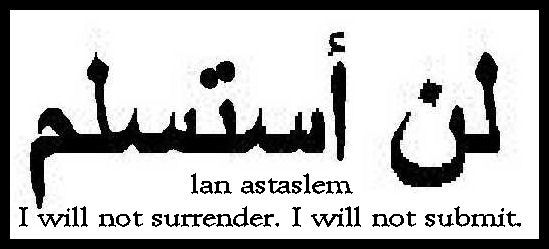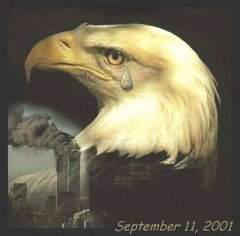Genocide, Genocide, Genocide (Part 2)

Part Two of a Three Part Series, from Dean and Snooper, here.
Genocide, Genocide, Genocide. Part Two of Three.
Tuesday, May 15, 2007 8:51 AM
And the World is Silent...
By Ben Dror Yemini
Part Two (Please first read Part 1)
Afghanistan: This is a web of nonstop mass killing – domestic and external. The Soviet invasion, which began on 24th December 1979 and ended on 2nd February 1989, left about a million dead. Other estimates talk of 1.5 million dead civilians and an additional 90,000 soldiers.
After the withdrawal of the Soviet Forces, Afghanistan went through a series of civil wars and struggles between the Soviet supporters, the Mojahidin and the Taliban. Each group carried out a doctrine of mass extermination of its opponents. The sum of the fatalities in civil war, up to the invasion of the coalition forces under American leadership in 2001, is about one million.
There are those who complain, and rightly so, about the carnage that took place as a result of the coalition offensive to overthrow the Taliban regime and as part of the armed struggle against al Qaida. Well, the invasion into Afghanistan caused a relatively limited number of deaths, less than 10,000. Had it not taken place, we would have seen a continuation of the self-inflicted genocide, with an average of 100,000 fatalities a year.
Afghanistan Summary: One million to one and a half million, as a result of the Soviet invasion; about one million in the civil war.
Somalia: Since 1977 this Muslim state in East Africa has been immersed in an unending civil war. The number of victims is estimated at about 550,000. It is Muslims killing mainly Muslims. UN attempts to intervene, in the interest of peace keeping, ended in the failure, as did later attempts by American Forces.
Most of the victims died not in the battle fields, but as a result of deliberate starvation and slaughter of civilians, in bombardments aimed at the civilian population (massive bombardments of opponent districts, such as the bombardment of Somaliland, that caused the deaths of 50,000 ).
Somalia Summary: 400,000 to 550,000 victims in the civil war.
Bangladesh: This country aspired to gain independence from Pakistan. Pakistan reacted with a military invasion that caused mass destruction. It was not a war, it was a massacre. One to two million people were systematically liquidated in 1971. Some researchers define the events of that year in Bangladesh as one of the three greatest genocides in (history - IJ) (after the Holocaust and the Ruanda genocide).
An inquiry committee appointed by the government of Bangladesh counted 1.247 million fatalities as a result of systematic murder of civilians by Pakistan’s army forces. There are also numerous reports of ‘Death squads’, in which "Muslim soldiers were sent to execute mass killings of Muslim farmers".
The Pakistani army ceased only after the intervention of India, which suffered from waves of refugees - millions – arriving from Bangladesh. At least 150 thousand more were murdered in acts of retaliation after the retreat of the Pakistan army.
Bangladesh summary: 1.4 million to 2 million.
Indonesia: The biggest Muslim state in the world competes with Bangladesh for the dubious title of ‘The biggest massacre since the Holocaust’. The massacre commenced with a communist uprising in 1965. There are different assessments (of the number of fatalities - IJ) in this case as well. The accepted estimate talks of as many as 400 thousand Indonesians killed in the years 1965-1966, although stricter estimates claim the number is higher.
The massacre was perpetrated by the army, led by Hag’i Mohammed Soharto, who seized power in the country for the next 32 years. An investigator of those years points out that the person who was in charge of suppressing the rebellion, General Srv Adei, admitted: "We killed 2 million not 1 million, and we did good work". For this argument, we will stick to the lower, more accepted estimates.
In 1975, after the end of the Portuguese rule, East Timor announced its independence. Within a short time it was invaded by Indonesia, who ruled the area until 1999. During these years about 100,000 to 200,000 people were killed, along with the complete destruction of infrastructure.
Indonesia summary: 400,000 killed, with an additional 100,000 to 200,000 in East Timor.
Iraq: Most of the destruction of the last two decades was the doing of Saddam Hussein. This is another case of a regime that caused the deaths of millions. Nonstop death. One of the highpoints was during the Iran-Iraq war, in the conflict over the Shat El Arab River, the river that is created by the convergence of the Euphrates and Tigris rivers. This was a conflict that led to nothing but large scale destruction and mass killing. Estimates are between 450,000 and 650,000 Iraqis, and between 450,000 and 970,000 Iranians. Jews, Israelis, and Zionists were not around, as far as is known.
Waves of purges, some politically motivated (opposition), some ethnic ( the Kurdish minority) and some religiously motivated (the ruling Suni minority against the Shiite majority), yielded an astounding number of victims. Estimates vary from one million, according to local sources, to a quarter million, according to Human Rights Watch. Other international organizations quote an estimate of about half a million.
In the years 1991 - 1992 there was a Shiite uprising in Iraq. There are contradictory estimates about the number of victims. The numbers vary from 40,000 to 200,000. In addition to the Iraqis that were slaughtered one must add the Kurds. During Saddam Hussein’s reign, between 200,000 to 300,000 of them were killed in a genocide that continued all through the 1980’s and the 1990’s.
Over half a million more Iraqis died from diseases because of the shortage of medicine, which was the result of sanctions imposed after the first Gulf War. Today it is clear that this was a continuation of the genocide perpetrated by Saddam on his own people. He could have purchased medicine, he had enough money to buy food and to build hospitals for all the children of Iraq, but Saddam preferred to build palaces and to distribute franchises to many in the west and in Arab states. This issue is being exposed in the corruption of the UN’s ‘Oil for Food’ project.
The Iraqis continue to suffer. The civil war that is raging there now - even if some would rather not give that name to the mutual massacre of Sunis and Shiites – is costing tens of thousands of lives. It is estimated that about 100,000 people have been killed since the coalition forces took control in Iraq.
Iraq Summary: 1.54 million to 2 million victims.
Iran Summary: 450,000 to 970,000 victims.
dm
Sphere: Related Content
Genocide, Genocide, Genocide. Part Two of Three.
Tuesday, May 15, 2007 8:51 AM
And the World is Silent...
By Ben Dror Yemini
Part Two (Please first read Part 1)
Afghanistan: This is a web of nonstop mass killing – domestic and external. The Soviet invasion, which began on 24th December 1979 and ended on 2nd February 1989, left about a million dead. Other estimates talk of 1.5 million dead civilians and an additional 90,000 soldiers.
After the withdrawal of the Soviet Forces, Afghanistan went through a series of civil wars and struggles between the Soviet supporters, the Mojahidin and the Taliban. Each group carried out a doctrine of mass extermination of its opponents. The sum of the fatalities in civil war, up to the invasion of the coalition forces under American leadership in 2001, is about one million.
There are those who complain, and rightly so, about the carnage that took place as a result of the coalition offensive to overthrow the Taliban regime and as part of the armed struggle against al Qaida. Well, the invasion into Afghanistan caused a relatively limited number of deaths, less than 10,000. Had it not taken place, we would have seen a continuation of the self-inflicted genocide, with an average of 100,000 fatalities a year.
Afghanistan Summary: One million to one and a half million, as a result of the Soviet invasion; about one million in the civil war.
Somalia: Since 1977 this Muslim state in East Africa has been immersed in an unending civil war. The number of victims is estimated at about 550,000. It is Muslims killing mainly Muslims. UN attempts to intervene, in the interest of peace keeping, ended in the failure, as did later attempts by American Forces.
Most of the victims died not in the battle fields, but as a result of deliberate starvation and slaughter of civilians, in bombardments aimed at the civilian population (massive bombardments of opponent districts, such as the bombardment of Somaliland, that caused the deaths of 50,000 ).
Somalia Summary: 400,000 to 550,000 victims in the civil war.
Bangladesh: This country aspired to gain independence from Pakistan. Pakistan reacted with a military invasion that caused mass destruction. It was not a war, it was a massacre. One to two million people were systematically liquidated in 1971. Some researchers define the events of that year in Bangladesh as one of the three greatest genocides in (history - IJ) (after the Holocaust and the Ruanda genocide).
An inquiry committee appointed by the government of Bangladesh counted 1.247 million fatalities as a result of systematic murder of civilians by Pakistan’s army forces. There are also numerous reports of ‘Death squads’, in which "Muslim soldiers were sent to execute mass killings of Muslim farmers".
The Pakistani army ceased only after the intervention of India, which suffered from waves of refugees - millions – arriving from Bangladesh. At least 150 thousand more were murdered in acts of retaliation after the retreat of the Pakistan army.
Bangladesh summary: 1.4 million to 2 million.
Indonesia: The biggest Muslim state in the world competes with Bangladesh for the dubious title of ‘The biggest massacre since the Holocaust’. The massacre commenced with a communist uprising in 1965. There are different assessments (of the number of fatalities - IJ) in this case as well. The accepted estimate talks of as many as 400 thousand Indonesians killed in the years 1965-1966, although stricter estimates claim the number is higher.
The massacre was perpetrated by the army, led by Hag’i Mohammed Soharto, who seized power in the country for the next 32 years. An investigator of those years points out that the person who was in charge of suppressing the rebellion, General Srv Adei, admitted: "We killed 2 million not 1 million, and we did good work". For this argument, we will stick to the lower, more accepted estimates.
In 1975, after the end of the Portuguese rule, East Timor announced its independence. Within a short time it was invaded by Indonesia, who ruled the area until 1999. During these years about 100,000 to 200,000 people were killed, along with the complete destruction of infrastructure.
Indonesia summary: 400,000 killed, with an additional 100,000 to 200,000 in East Timor.
Iraq: Most of the destruction of the last two decades was the doing of Saddam Hussein. This is another case of a regime that caused the deaths of millions. Nonstop death. One of the highpoints was during the Iran-Iraq war, in the conflict over the Shat El Arab River, the river that is created by the convergence of the Euphrates and Tigris rivers. This was a conflict that led to nothing but large scale destruction and mass killing. Estimates are between 450,000 and 650,000 Iraqis, and between 450,000 and 970,000 Iranians. Jews, Israelis, and Zionists were not around, as far as is known.
Waves of purges, some politically motivated (opposition), some ethnic ( the Kurdish minority) and some religiously motivated (the ruling Suni minority against the Shiite majority), yielded an astounding number of victims. Estimates vary from one million, according to local sources, to a quarter million, according to Human Rights Watch. Other international organizations quote an estimate of about half a million.
In the years 1991 - 1992 there was a Shiite uprising in Iraq. There are contradictory estimates about the number of victims. The numbers vary from 40,000 to 200,000. In addition to the Iraqis that were slaughtered one must add the Kurds. During Saddam Hussein’s reign, between 200,000 to 300,000 of them were killed in a genocide that continued all through the 1980’s and the 1990’s.
Over half a million more Iraqis died from diseases because of the shortage of medicine, which was the result of sanctions imposed after the first Gulf War. Today it is clear that this was a continuation of the genocide perpetrated by Saddam on his own people. He could have purchased medicine, he had enough money to buy food and to build hospitals for all the children of Iraq, but Saddam preferred to build palaces and to distribute franchises to many in the west and in Arab states. This issue is being exposed in the corruption of the UN’s ‘Oil for Food’ project.
The Iraqis continue to suffer. The civil war that is raging there now - even if some would rather not give that name to the mutual massacre of Sunis and Shiites – is costing tens of thousands of lives. It is estimated that about 100,000 people have been killed since the coalition forces took control in Iraq.
Iraq Summary: 1.54 million to 2 million victims.
Iran Summary: 450,000 to 970,000 victims.
dm











































|